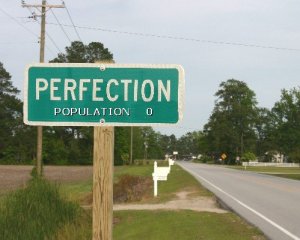 Originally published in the Otago Daily Times by Tom McKinlay
Originally published in the Otago Daily Times by Tom McKinlay
—
If we don’t act soon, the world we leave our children will be in a sorry state indeed, leading Australian scientist Prof Corey Bradshaw tells Tom McKinlay.
Prof Corey Bradshaw’s 9-year-old daughter lives what sounds an idyllic existence. On their small farm outside Adelaide in South Australia, she has her chickens and her dogs and her cats, her goats and her sheep.
She’s an only child, but is not short of attention from adults and reads voraciously.
She has big plans; there are at least 25 careers she likes the look of, that she’ll undertake simultaneously: farmer, wildlife rescuer, self-sufficient bush dweller – feeding herself by shooting arrows at fish – scientist and more.
She is optimistic about the future. As she should be. A 9-year-old girl living in Australia in 2016 should regard the sky as no limit at all.
All this I learn from her father, ecologist Prof Bradshaw, who talks of his daughter with an enthusiasm unbounded.
It is fair to assume she has picked up some of her interest in the natural world from him.
He holds the Sir Hubert Wilkins Chair of Climate Change in the School of Biological Sciences at the University of Adelaide.
And the ecologist, conservation biologist and systems modeller – with a University of Otago degree – has shared a great deal of his work with his daughter.
“She’s very much a farm kid, but because of who I am she gets to hear a lot about animal and plant systems around the world, and she’s travelled a lot with me and she’s a complete fanatic of David Attenborough,” the professor says.
So far, still so idyllic. But Prof Bradshaw’s work means he is at the forefront of alerting the world to what is not right with it.
Pollution, climate change, habitat loss, extinction.
His daughter has travelled with him to see species that might not be with us by the time she grows up.
“She’s hyper-aware of extinctions, in particular, and how climate change is contributing to that,” Prof Bradshaw says.
“I don’t pull any punches with her.”
In fact, he made her cry when she was 5 explaining climate change. She hasn’t needed to travel to know the pot is on the boil. Fires have forced the family to flee its South Australian property several times, not just at the height of summer.
One of the worst fires in the region struck in May a couple of years back.
“We were on the doorstep of winter and we had one of our worst fires in 20 years.”
So even without a scientist in the family, there are certain unavoidable truths for a child growing up in 21st-century Australia.
Prof Bradshaw is coming to Dunedin next month as part of the New Zealand International Science Festival to talk on climate change, looking at it from his daughter’s perspective. Read the rest of this entry »
 A really important paper was just published in Science Advances by Elizabeth Anderson & colleagues.
A really important paper was just published in Science Advances by Elizabeth Anderson & colleagues. Anyone familiar with this blog and our work on energy issues will not be surprised by my sincere
Anyone familiar with this blog and our work on energy issues will not be surprised by my sincere 



